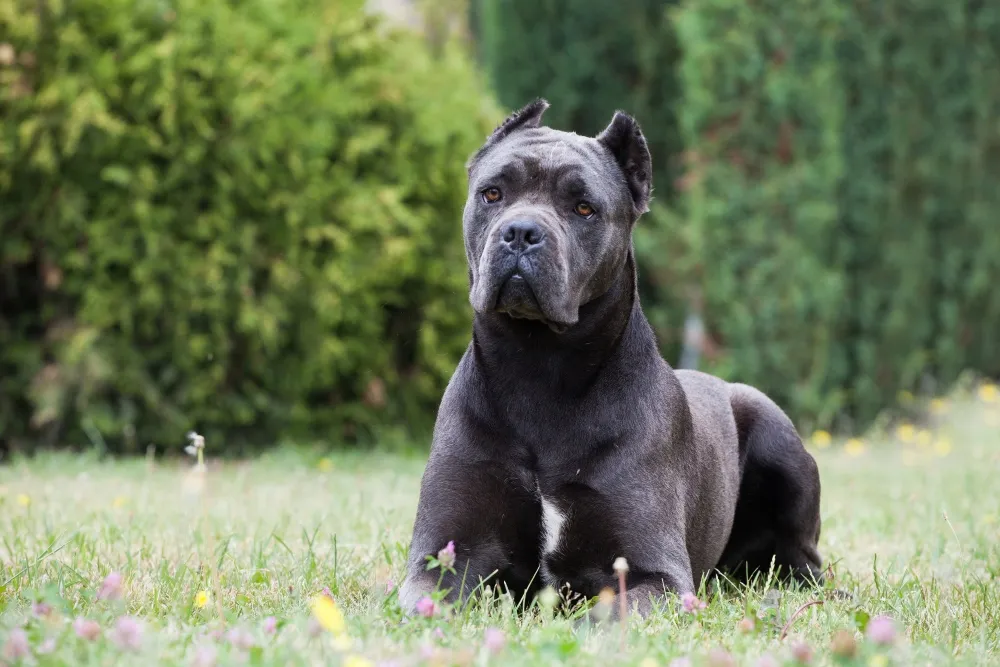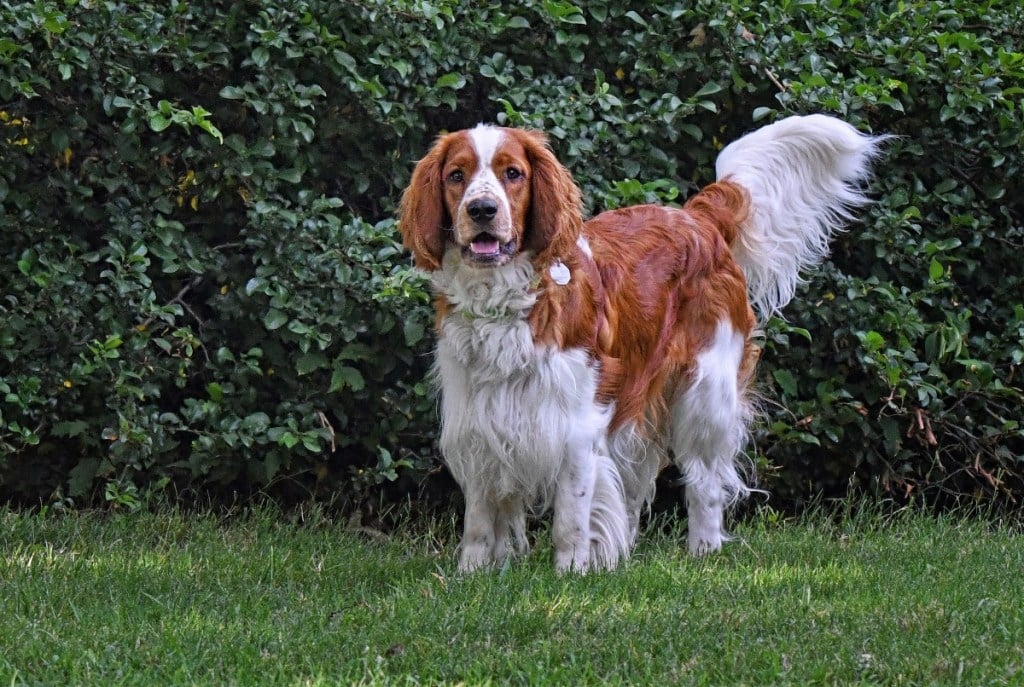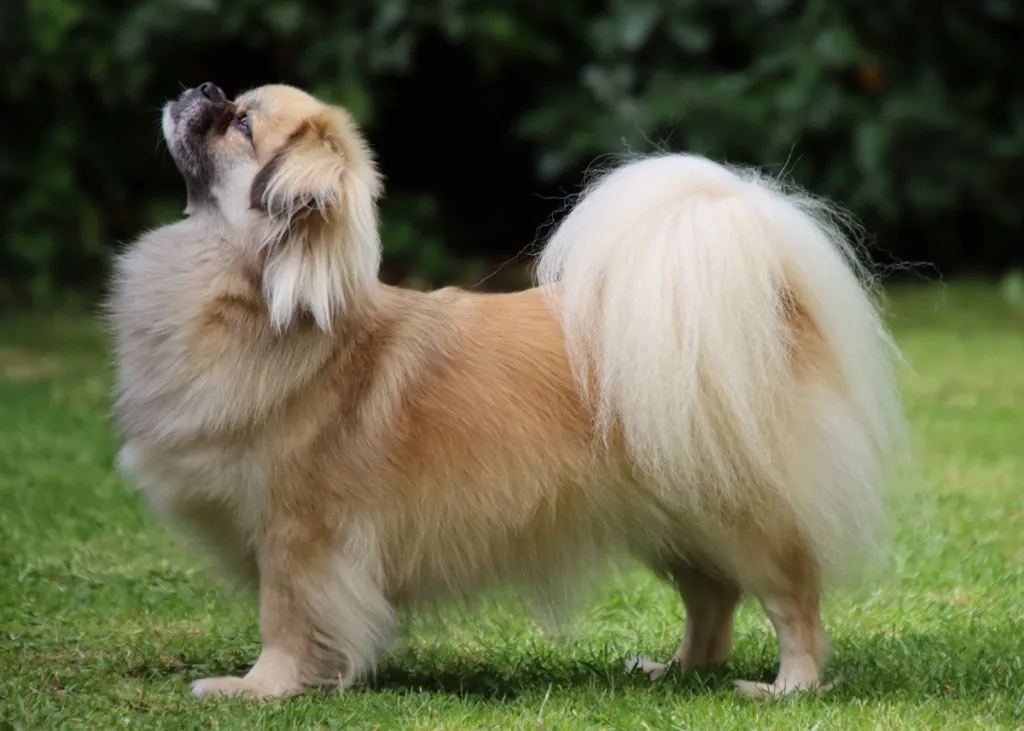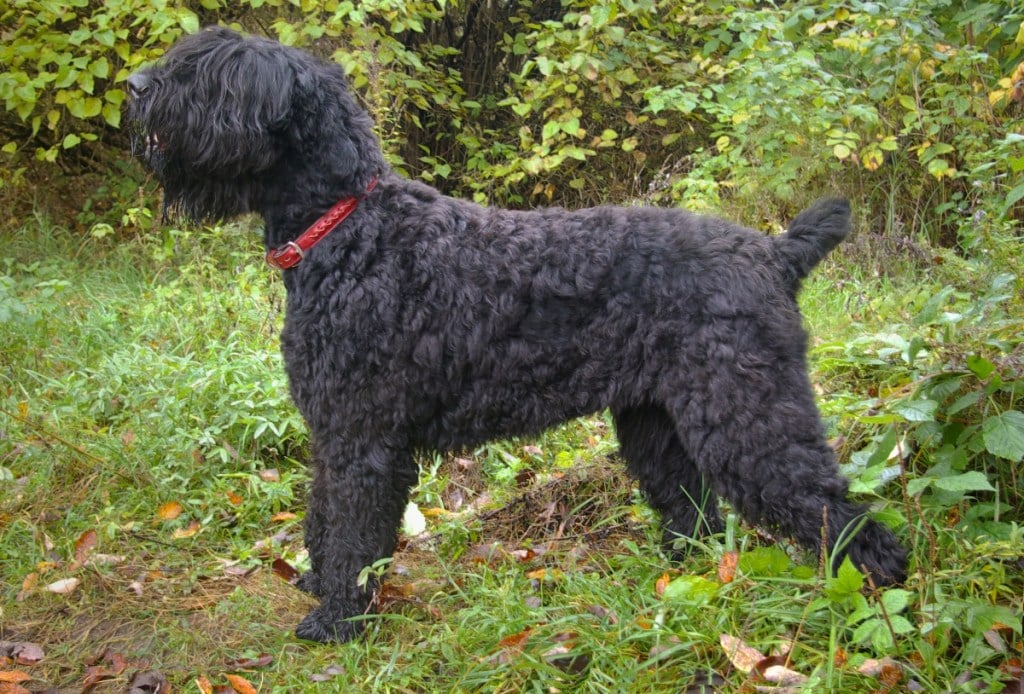Introduction to Cane Corsos
The cane corso is a dog breed that has a majestic appearance and that is a smart and affectionate dog to have in your life. Cane corsos are also described as confident, protective, and noble. Their name roughly translates to “bodyguard dog” in Latin, and you can see why when you encounter the size and expression of these alert and muscular dogs.
However, these are also versatile dogs that can make good household pets because of their loyalty to family members and eager-to-please personalities. If you have been curious about the cane corso breed, here is what you need to know about these dogs before bringing one into your home for the first time.
Size of Cane Corsos
Male cane corso dogs typically stand between 25 and 27.5 inches tall, while females are 23.5 to 26 inches tall. Their weight is proportionate to their height, but overall this is a large dog breed that often weighs over 100 pounds.
It takes these dogs a while to reach their full adult height and weight – sometimes up to two years. But both male and female dogs often get to their final, adult size by the age of 19 months.
Here’s how big you can expect your cane corso to get during the dog’s earliest months of life:
| Weight Chart | 3 months | 6 months | 9 months | 12 months | 2.5 years |
| Male cane corsos | 23-35 lbs. | 61-77 lbs. | 86-103 lbs. | 92-116 lbs. | 99-121 lbs. |
| Female cane corsos | 22-32 lbs. | 52-68 lbs. | 72-90 lbs. | 83-103 lbs. | 88-110 lbs. |
Cane Corsos Personality and Breed Characteristics
Cane corsos are working dogs that love having a job to do, such as guarding and hunting. These are large, powerful, and athletic dogs that do best with family members that they are familiar with. They are not the most friendly and sociable dogs with everyone they meet, compared to some other breeds. But if you give a cane corso a job to do and pay plenty of attention to your pup every day, this dog will make a great addition to your household and give you undivided protection and loyalty.
As you get to know a cane corso’s personality, here’s what you can expect based on his or her breed characteristics:
| Breed Characteristic | Level (High, Medium, Low) |
| Affectionate with People | Medium |
| Good with Kids | Low |
| Good with Pets | Medium |
| Need for Exercise | High |
| Energy Level | Medium |
| Intelligence Level | High |
| Able to Be Trained | High |
| Amount of Barking | Medium |
| Amount of Shedding | Medium |
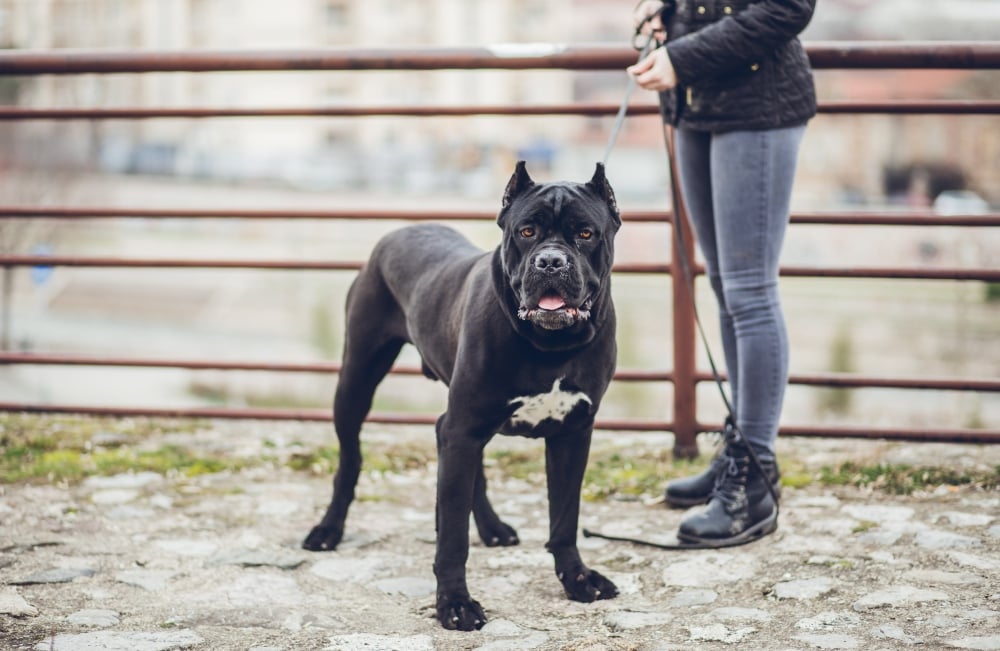
History of Cane Corsos
The cane corso is a mastiff-type dog that is a working breed. Historical records indicate that ancient Greeks first bred these giant, guardian dogs. During the Roman Empire, the dogs were brought to Italy and bred with native Italian breeds. These ancestors of the modern corso were larger and tasked with charging enemy lines during battle. When the fighting was over, these dogs were used for hunting, livestock droving, farming, and guarding houses and farms.
The breed became nearly extinct by the mid-20th century but some of them survived in backcountry regions of Italy. They were considered very rare dogs for many years until the 1980s. A group of Italians revived the breed in the 1970s, and the Society Amorati Cane Corso formed in 1983. The first of these dogs arrived in the U.S. in 1988, and the American Kennel Club recognized them as a breed in 2010.
Cane Corso Appearance
Cane corsos have a short coat that is black, shades of gray, shades of fawn, or red. These working dogs are sturdy with a strong skeleton, and they move with ease and elegance. Recognized dog breeds, such as the cane corso, have established breed standards by which dogs are judged at shows and competitions.
Here is an overview of the breed standard information for cane corsos:
Head:
- Large and about one-third of the height of the withers
- Wide and slightly curved skull
- Alert and attentive expression
- Medium-size, almond-shaped eyes
- Ears set well above cheekbones
- Very broad and deep muzzle
- Slightly undershot bite
Neck, Topline, Body:
- Slightly arched neck with small amount of dewlap
- Ribs long and well-sprung
- Moderate tuck-up
- Broad and well-muscled chest
- Thick tail at the root with not much tapering at tip
Forequarters:
- Strong and muscular forequarters
- Pasterns almost straight and strong
- Round feet with well-arched toes
- Dark, hard, and lean pads
- Front dewclaws can remain or be removed
Hindquarters:
- Powerful and strong hindquarters
- Long, wide, and angulated thighs
- Rear dewclaws are removed
- Hind feel oval-shaped and less-arched toes
Coat:
- Stiff, short, and shiny coat
- Light undercoat becomes thicker in winter
Color:
- Black, gray, fawn, or red
- Brindling is allowed on all colors
- Black or gray mask
- White patch on chest, chin, throat, toes, or back of pasterns acceptable
Gait:
- Powerful, effortless, free flowing gait
- Topline remains level with minimal bounce

Caring for Cane Corsos
Cane corsos are dogs that need secure, fenced yards to live their best lives. If they aren’t properly exercised and given room to move around, they are known to exhibit destructive behaviors in a house. They can be aggressive, and even dangerous, if not properly socialized.
They are not the most adaptable dogs and do not do well with apartment living. Also, they have high physical needs and surprisingly high health and grooming needs. However, they are trainable with a little patience, love, and care.
Here are some general tips for taking the best care of a cane corso:
Best Living Environments:
- No apartments
- Houses with secure, fenced yards
- Usually best in households without young children
Type of Exercise:
- These dogs need lots of exercise each day
- Run at least a mile in the morning with pet parent
- Brisk walks as an alternative to running
- Long hikes
- Running alongside a bicycle
Mental Enrichment:
- Needs steady mental stimulation to prevent destructive behavior
- Dock diving
- Protection sports
- Tracking events
- Agility training
- Obedience training
Training Strategies:
- Early socialization is essential to reduce aggression risk
- Dogs tend to be dominant and protective
- Begin training early in life and be consistent
- Use love and rewards instead of harsh corrections
Grooming Tips:
- Brush weekly or daily during shedding season
- Brush with a medium-bristle brush, grooming mitt, or hound glove
- Trim nails regularly to prevent pain and issues while running and walking
Common Health Problems of Cane Corsos
The average life expectancy for a cane corso is eight to 10 years. These dogs live generally healthy lives but are prone to certain health conditions, such as hip dysplasia, idiopathic epilepsy, eyelid abnormalities, and mange. The national breed club for cane corsos recommends the following health tests for these dogs: hip evaluation, cardiac exam, and elbow evaluation.
These are some of the most common health issues that arise with cane corsos:
- Hip dysplasia
- Entropion, ectropion, and cherry eye (all eyelid issues)
- Gastric torsion/bloat
- Demodectic mange
- Joint problems, especially arthritis
Diet and Nutrition for Cane Corsos
Cane corsos are prone to overeating and weight gain. So, it is important to monitor your cane corso’s portions and only give your dog an appropriate amount of food in each meal rather than letting the dog graze on food all day.
It is best to feed your cane corso puppy three or four times per day until the age of six months. After that, feed your cane corso twice per day. A fully grown cane corso will eat about four to five cups of total food daily, depending on your dog’s activity level and the caloric density of the diet.
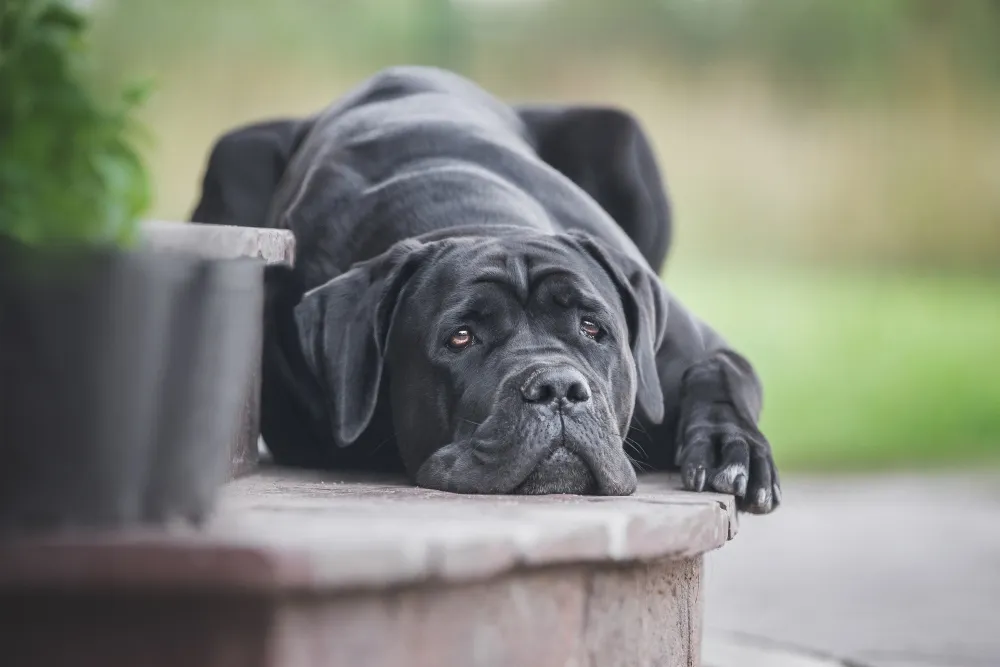
Where to Adopt or Purchase Cane Corsos
A cane corso is not the best first-time dog for someone who has never been a pet parent before. But for experienced dog lovers, they are excellent companions and can be found through rescue organizations and from responsible breeders.
The Cane Corso Association of America is American Kennel Club’s parent breed club and offers resources to find a breeder on its website. One rescue organization to consider if you are looking to adopt a dog is Must Love Corsos Rescue, a nonprofit rescue organization that lists dogs available for option on its website, as well as foster opportunities.
Related Breeds
The cane corso is a unique dog breed, but there are similar breeds that you may also be interested in if you love big, strong, and powerful dogs. Here are some other types of dogs to consider before adopting or purchasing a cane corso:
- Bullmastiff
- Perro de pressa canario
- Neapolitan mastiff
- Rottweiler
- Japanese tosa
- Dogo Argentino
Pet Insurance for Cane Corsos
Cane corsos require dedicated owners who know how to handle big dogs and be as protective of them as these dogs are of their beloved family members. One of the best things that you can do to plan ahead for your cane corso’s future is to sign your dog up for pet insurance through Healthy Paws. We offer cane corso pet insurance that covers everything from accidents to illnesses, cancer, emergency care, genetic and hereditary conditions, breed-specific conditions, and alternative care.
Get a quote for the cost of cane corso health insurance today and be prepared for whatever comes your pup’s way!
